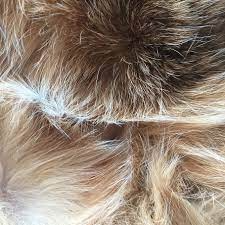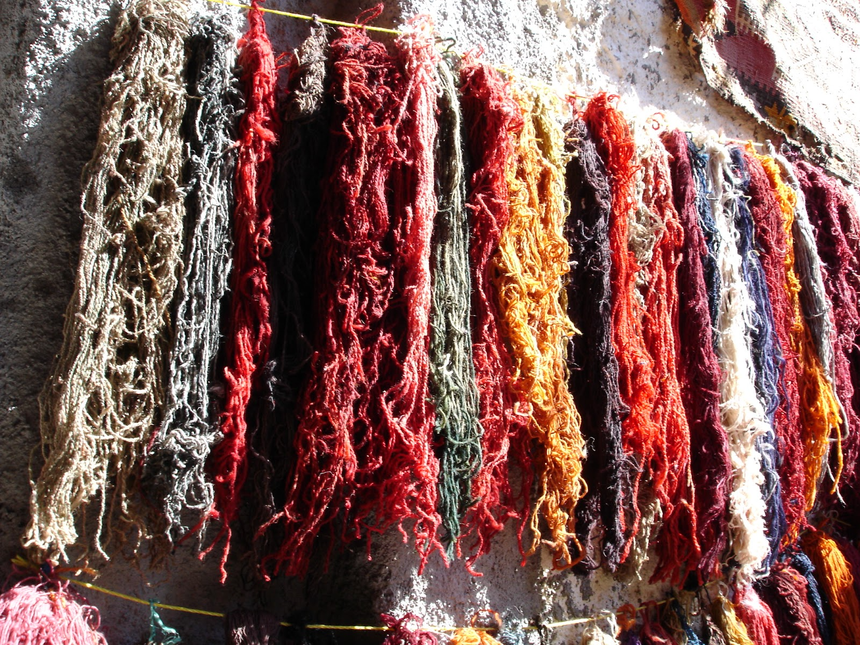Animal Fibre - Definition, Examples, Types, FAQs
Q- Animal fibres are ?
Animal fibres are the natural fibres which contains largely of certain proteins. Examples of some natural fibre includes hairs/ fur ( also including wool), silk and feathers are also included in fibres. The animal fibres that are used generally in both i.e. in the world of manufacturing and also the fibres that are used by the hand spinners are wool obtained from domestic sheep and silk.
Also very popular are mohair and alpaca fibre that are obtains from Angora goats. Unusual fibres like Angora wool that are obtains from rabbits and Chiengora which are obtains from dogs also exist, but these both types of unusual fibres are not used for mass production. As we can easily understand that all animal fibres have not the same properties, and even within a same species the fibres are not consistent. Merino is a kind of very soft, contains fine wool, but Cotswold is coarser and yet both of them i.e. Merino and Cotswold are types of sheep.
This comparison can also be studied with the help of microscope at microscopic level, that help in comparing the diameter and structure of the obtained fibres. In respect to animal fibers and natural fibres, generally individual fibres are different, while all synthetic fibers are same in shape. This characteristic are very useful to differentiate between natural and synthetic fibers through a microscope. Natural animal fibres example is sheep wool. From animal fibres, animal fabric are made.
Also read -
- NCERT Solutions for Class 11 Chemistry
- NCERT Solutions for Class 12 Chemistry
- NCERT Solutions for All Subjects
Animal fibres images


Silk and wool
Q- Examples of animal fibres ?
Silk is a type of natural protein fiber, some forms of silk can also be woven into textiles. The best-known type of silk is the one that is obtained from cocoons formed by the larvae of the silkworm i.e. Bombyx mori when reared in captivity. Rearing of silks is known as sericulture. Degummed fibres that are obtains from B. mori are 5-10 μm in diameter.
The shimmering appearance due to which the silk always be in high demand comes from the fibres of triangular prism- like cross-sectional structure that allows silk cloth to refract incoming light at different angles. The length of the silk fibre mainly depends on the fact that how it has been prepared. As in case of cocoons, the cocoon is made up of one strand, if the cocoon will unwound carefully then the fibres will be very long.
Q- What is animal fibre ?
Animal fibres are the natural fibres which contains largely of certain proteins. Examples of some natural fibre includes hairs/ fur ( also including wool), silk and feathers are also included in fibres. Spider silk known as the strongest natural fibre till now. Amazing fact about the strongest dragline silk is that this silk is five times stronger than steel and three times tougher than Kevlar. It also contains high elastic property, the silk obtains from ogre-faced spider can be stretched six times from its original length without any damage.
Till 2005, there was no synthetic material produced that can contains the property of spider silk, but it was actively being used by the U.S. military for applications such as body armour, manufacturing of parachutes and manufacturing of ropes. Genetically engineered goats had been raised for the production of spider silk in their milk which costs at around $1,500 per gram.
Q- Which animal gives us wool?
Ans: Sheep
Types of animal fibres
Wool
Wool is also a fibre that derived from the fur of animals belonging to Caprinae family, generally sheeps, but the hair of certain species of other mammals like goats, rabbits and alpacas also known as wool.
Alpaca
Alpaca fibre i.e. raised from alpacas. It is warmer in comparison to sheep's wool and also lighter in weight. Its properties includes that it is soft, glossy and fine, and luxurious. The thickness of this quality fibre varies between 12-29 micrometers. Most of the alpaca fibers are white in colour, but it is also availablen in various shades of brown and black.
Angora
Angora wool also known as Angora fibre refers to the down coat that are produced by the Angora rabbit. There are many variations in Angora rabbits – like it can be English, German, France, and can be Giant. Angora is very popular due its softness, it contains thin fibres of diameter 12-16 micrometers that makes it a quality fibre, and what knitters known to be a halo. The fibre will felts very easily. Angora fibre are generally in white, or in black, but also be in various shades of brown. Bison fibres known to be the soft undercoat of the American Bison.
The functiom of the coat of bison is to protect them during harsh winter conditions, and it consists of mainly a coarse shiny overcoat, a short and dense undercoat, and a coarse bulky midcoast. The undercoat comprises of fine and hollow guard hairs (having an average diameter of 59 micrometers) and down fibres (having an average 18.5 micrometers). Downy fibers are mainly chosen for textile applications. Bison fibres are of grey or red-brown and its length is about 2.5 cm.
Cashmere
Cashmere wool is a type of wool that is obtained from Cashmere goat. Cashmere main characteristic is that it has luxuriously soft fibres with properties like high napability and loft. If looking for a natural goat fibre then we can considered Cashmere, but it must be under 18.5 micrometers in diameter and with a minimum length of 3.175 centimeters. It is to be noted that they are providing a natural light-weight insulation without bulk. Fibres are highly adaptable and can be easily converted into fine or thick yarns, and it can also be in light to heavy-weight fabrics.
Also, students can refer,
- NCERT solutions for Class 12 Chemistry Chapter 15 Polymers
- NCERT Exemplar Class 12 Chemistry Solutions Chapter 15 Polymers
- NCERT notes Class 12 Chemistry Chapter 15 Polymers
Mohair
Mohair is a type of silk-like fabric and yarn made from the hairs of the Angora goat. Its main properties includes that it is both durable and resilient. It is prized for its high luster and amazing sheen, and is most often used in fibre blends for the addition of these qualities to a textile. Mohair can also takes dye exceptionally well.
Sheep's wool
Wool contains mainly two qualities that distinguish it from hairs or fur and the qualities are that it contains scales which overlap like shingles on a roof and it is also crimped and the other property is that in some fleeces the wool fibres can have more than 20 bends within a inch. Wool shows variations in diameter from below 17 micrometers to over 35 micrometers. The better the wool, the softer it will be but in case of coarser grades they are more durable and less prone to pilling.
Qiviut
Qiviut is also a fine underwool obtains from muskox. Length of Qiviut fibres are about 5 to 8 cm, and length of fine fibres are between 15 to 20 micrometers in diameter, and are relatively very smooth. It is approximately eight times warmer than that of sheep's wool and also it does not felt or shrink. Hand spinners generally use fibre from animals like camels, llamas, possums and yak. These fibers are mainly used in clothing purposes. Hairs that are obtains from animals such as horses is also an animal fibre.
Horsehair also plays an important role in formation of brushes, the bows of musical instruments and many more things. Along with the mink hair, it's also a common choice for an eyelash extensions and similar cosmetics. The best artists uses brushes that are made from Siberian weasel, many other fibres are also used for this purpose including ox hair and hog bristle. Camel-hair brushes are generally made from squirrel, cheaper brushes are from pony. Chiengora is type of dog hair. Wool from a wide range of animals that can be used for making handicrafts and garments.
Also check-
- NCERT Exemplar Class 11th Chemistry Solutions
- NCERT Exemplar Class 12th Chemistry Solutions
- NCERT Exemplar Solutions for All Subjects
NCERT Chemistry Notes: